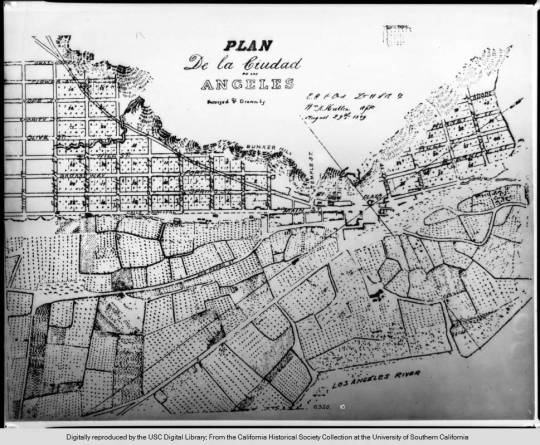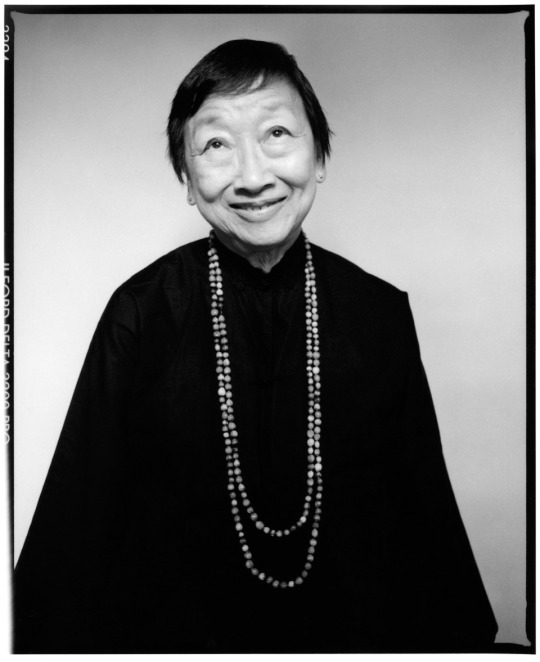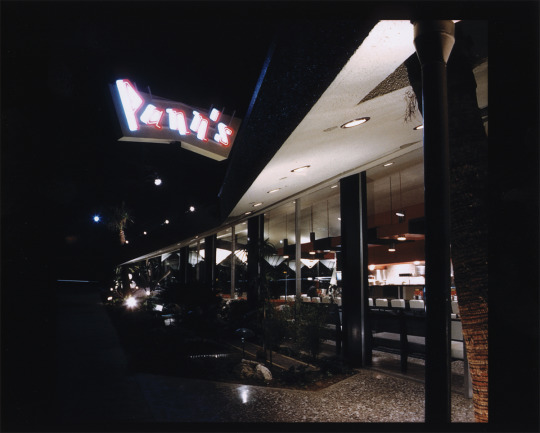Link
“And in central L.A.’s Arlington Heights neighborhood, artists Noah Davis and Karon Davis created the Underground Museum in 2012 to “bring museum quality art to a community that had no access to it”
3 notes
·
View notes
Link
“This process seems to have yielded an incoherent body of memorials. In Hollywood alone, official squares memorialize several celebrity entertainers (including comedian Bob Hope, television host Larry King, and singer Celia Cruz), the Famous Amos brand of cookies, gay rights activist Morris Kight, and slain LAPD officer Ian Campbell. “I Love Lucy Square” (at Melrose and Plymouth) honors both comedian Lucille Ball and Lucy Casado, owner of the landmark Lucy’s El Adobe Café on Melrose. Several subcommittee members described these squares as feeble gestures toward civic memorialization; in most cases, only a few descriptive words accompany the name on the sign, with nothing visible at street level to provide context”
3 notes
·
View notes
Photo

Glorifying the Lion: Telling the Other Side of L.A.’s History
Tyree Boyd-Pates
3 notes
·
View notes
Photo
“This is the kind of exhibition-making that we are referring to when we talk about community curation, a methodological approach that attempts to make museums and their collections more responsive to and inclusive of the diverse communities that surround them. It begins with the participation of communities of color seldom involved in the decision-making process in museums. It also works to center voices and perspectives that are traditionally not heard because of historical erasure.”

Glorifying the Lion: Telling the Other Side of L.A.’s History
Tyree Boyd-Pates
3 notes
·
View notes
Link
Eric Avila: “We should also acknowledge the role of the Spanish fantasy past in the regional construction of whiteness. When I teach the Spanish fantasy past in my courses, I often compare it to the minstrel show. I compare it to a regional version of racial appropriation, racial disguise, not necessarily on the stage of a theater but in architecture, in the built environment, in landscape design. As a cultural historian, I come back to questions of performance, of narrative. I think Wendy’s point is an excellent one about creating publics, creating audiences, creating readership. The L.A. Times—great example of white racial formation by creating a readership. I think you can talk about the Spanish fantasy past very much in a similar way.”
3 notes
·
View notes
Link
“The miles of concrete highways built in the mid-twentieth century not only sliced through communities of color that Caltrans might have imagined would pose the least resistance, but exaggerated, in Eric Avila’s words, ‘the increasingly separate and unequal geography of race in postwar America’ ... These infrastructural monuments to racism do not just divide and segregate, they impose life sentences on those who live along their corridors, where high rates of asthma, cancer, and stunted lung development are among the public health impacts. Importantly, they are all sites of both industry and damage to working-class communities.”
3 notes
·
View notes
Text
Key Recommendations
[ESP] [Website]
Though readers will find specific policy recommendations threaded throughout this report, the list below features those that attracted the broadest and most energetic support from the members of the Civic Memory Working Group over the course of our collaboration. Together they offer a sort of road map suggesting where the work begun here should turn next.
Continue and Expand the Conversation
1. Spend the second half of 2021, virtually or in person as the COVID-19 pandemic allows, discussing these recommendations and other materials in this report with a range of Los Angeles communities. These listening sessions should explore, among other subjects, how the City can shift its focus in stewarding civic memory from acting as a gatekeeper to a facilitator, giving fuller voice to community memory and bottom-up representation. Use these sessions to begin to turn the recommendations on this list into policy or built markers of civic memory.
2. Develop programs to train all city employees in civic history and Indigeneity, as they are hired and on an ongoing basis.
Increase Access and Share Information
3. Create a new City Historian position, or a three-person council of historians and community elders, on a rotating two-year basis, looking to the City’s Poet Laureate position as a model and potentially drawing from the ranks of college and university history departments and independent scholars.
4. Organize a task force of museum professionals, working artists, historians, Indigenous and other community leaders, and others to explore the creation of a Museum of the City of Los Angeles, with the understanding that this group may recommend instead supporting similar work inside museums and other cultural institutions already established.
5. Complete and publish an audit of the monuments and memorials in Los Angeles on public and publicly accessible land.
6. Broaden the accessibility and impact of the Los Angeles City Archives and Records Center as a basis for new civic memory initiatives.
7. Create a room or other space inside City Hall, open to the public, to celebrate civic memory and the Indigenous history of the site and its surroundings. This room should include both historical records and archives and rotating exhibits and displays related to civic architecture and the history of Los Angeles.
Recognize Indigenous History
8. Begin the process of adopting an Indigenous Land Acknowledgement Policy for the Mayor’s Office and for the City, in close collaboration with the Los Angeles City/County Native American Indian Commission (NAIC), as outlined in the summary appearing later in this volume from the Indigenous Land Acknowledgement subcommittee.
9. Create a new, full-time staff position within the Mayor’s Office to serve as official liaison to the NAIC and the broader Indigenous community.
10. Embed historians and Indigenous leaders on a compensated basis in City-led planning efforts, for example the Taylor Yard/G2 Equity Plan for a site along the Los Angeles River. Preserve or Acknowledge the Various Histories Embedded in the Built Environment
11. Take steps to protect the architecture and civic memory of the recent past, beginning with an effort to extend the Department of City Planning’s SurveyLA initiative from 1980 to the year 2000.
12. Strengthen financial and other penalties for the prohibited demolition of significant architecture, particularly residential architecture.
13. Pursue the expansion of Historic-Cultural Monument status to include thematic or non-contiguous designations, for example the Bungalow Court, and to protect the body of work of a single prominent firm or social or cultural movement.
14. Consider a City-led effort to mark and make visible the boundaries of racially exclusive zoning and lending practices in housing, e.g. redlining, or the communities displaced or disfigured by freeway construction.
Reconsider Memorials and Difficult Histories
15. Create a garden or series of gardens dedicated to the essential workers of Los Angeles.
16. Arrange specific community-engagement sessions during the remainder of 2021, guided by the recommendations in this report, to solicit ideas for commemorating the 30th anniversary, in 2022, of the 1992 civic unrest in Los Angeles. The goal should be a range of commemorative approaches, rather than a single event or memorial.
17. Work with the leadership of the Chinese American Museum and a range of community groups to develop citywide commemorations, considering both ephemeral and permanent forms, to mark the 150th anniversary of the 1871 Anti-Chinese Massacre on October 24, 2021.
18. Develop strategies to recontextualize outdated or fraught memorials as an alternative to removal—although removal will, in certain cases, remain the best option.
2 notes
·
View notes
Photo


Daily Life in Early Los Angeles
Marissa López
3 notes
·
View notes
Photo
“Cycling defamiliarizes our sense of space by allowing us to move through the city at different speeds; it amplifies and makes possible what philosopher Henri Bergson refers to as “presence.” To be “present” in space is to experience time as “duration,” apart from chronology. This idea allows Bergson to distinguish between knowledge and sense experience and to develop his theory that an encounter with anything outside our self is a physical transformation that depends on presence and duration.
Changing the way we move through the city can shift us away from a conception of time as spatial progression to time as sense, towards Bergson’s duration, where the past can be sensed rather than known. Duration involves “dimensional” experience, according to Bergson, rather than “representational.” He explains this as the difference between walking through a city versus looking at pictures or reading about it. Our tour replaces representation with dimension, offering a transformative experience of the history of Mexican Los Angeles. For us, transformation relies on bikes: specifically, in the case of this project, the bike-share program that the Los Angeles County Metropolitan Transportation Authority, or Metro, launched in 2016.”


Daily Life in Early Los Angeles
Marissa López
3 notes
·
View notes
Photo
“Like every Armet & Davis diner, Pann’s was designed to seduce motorists from a passing glance. The exterior walls were glass curtains that revealed huge glowing triangular pendant lamps. It could have been a Cadillac showroom. From the outside, it looked as spacious as a church and as mesmeric as an aquarium. Helen said each coffee shop should always appear like the site of a special event, even if the only movement within was a transient sipping coffee on a swivel stool.”


6710 La Tijera Blvd.
Sam Sweet
5 notes
·
View notes